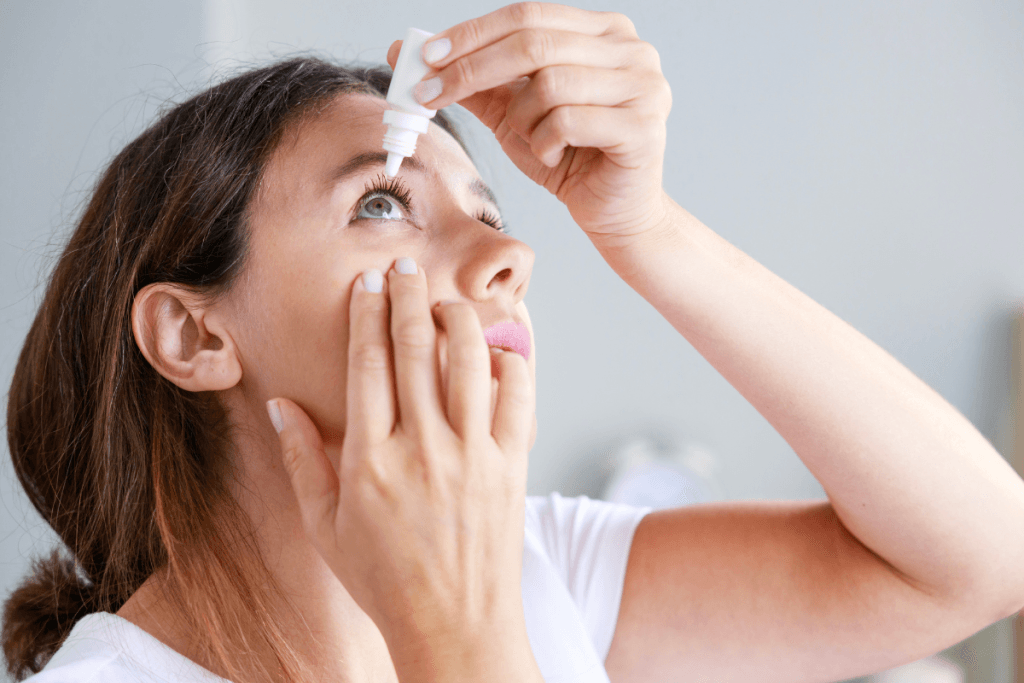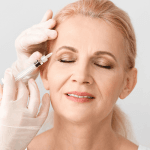Tobradex Ophthalmic Suspension continues to be a reliable choice among healthcare professionals for treating ocular infections that involve inflammation. For clinics and practices managing a high volume of patients with bacterial conjunctivitis, blepharitis, or post-operative inflammation, Tobradex Ophthalmic Suspension provides an efficient and clinically effective treatment.
In this article, we’ll explore what Tobradex Ophthalmic Suspension is, how it works, and its appropriate use in different clinical settings.
What is Tobradex Ophthalmic Suspension?
Tobradex Ophthalmic Suspension is a combination medication containing tobramycin (an aminoglycoside antibiotic) and dexamethasone (a corticosteroid). It’s used primarily for the treatment of inflammatory ocular conditions where bacterial infection is present or a risk. This dual-component approach allows the suspension to both eliminate bacterial pathogens and suppress inflammatory responses, minimizing discomfort, redness, and swelling for patients.
Tobramycin targets and inhibits bacterial protein synthesis, covering a range of Gram-negative and some Gram-positive organisms. Dexamethasone, on the other hand, acts by controlling the inflammatory cascade, reducing leukocyte migration and cytokine production. Together, they ensure a comprehensive response to post-surgical inflammation or primary infections such as conjunctivitis or anterior uveitis where infection cannot be ruled out.
When to Use Tobradex Ophthalmic Suspension in Clinical Practice
Tobradex Ophthalmic Suspension is typically prescribed in cases of:
- Acute bacterial conjunctivitis
- Inflammatory blepharoconjunctivitis
- Post-operative inflammation where there’s a risk of secondary infection
- Superficial ocular trauma involving exposure to bacterial pathogens
The suspension form is especially suitable for patients with anterior segment conditions. For posterior segment involvement, systemic therapy or intravitreal injection may be more appropriate.
Healthcare providers should always consider a differential diagnosis before initiating corticosteroid-containing regimens to rule out viral, fungal, or mycobacterial infections, where steroid use could worsen the condition.
Understanding Tobradex Ophthalmic Suspension Dosage
Appropriate Tobradex Ophthalmic Suspension dosage is critical to avoid under-treatment of infection or adverse corticosteroid effects.
Typical adult dosage:
- 1 to 2 drops in the affected eye(s) every 4 to 6 hours.
- In more severe infections, the dosage can be increased to 1 to 2 drops every 2 hours during the initial 24 to 48 hours.
As symptoms improve, dosing frequency should be gradually reduced. The treatment duration typically ranges between 5 and 10 days but should not exceed what is clinically necessary to avoid steroid-related complications such as elevated intraocular pressure or secondary fungal infections.
Pediatric patients older than two years can be prescribed Tobradex Ophthalmic Suspension at similar dosing, but practitioners must monitor for systemic absorption and ocular pressure changes.
Comparing Formulations: Suspension vs. Solution
Clinicians may often ask about the difference between Tobradex Ophthalmic Suspension and Tobradex Ophthalmic Solution. While both contain the same active ingredients, the suspension provides a slightly longer contact time with ocular tissues due to its thicker consistency, potentially enhancing anti-inflammatory effects. However, it must be shaken well before each use to ensure proper mixing of ingredients.
The solution (used more often for specific compounded versions or alternatives) tends to be better tolerated in patients sensitive to particulate matter or who struggle with blurred vision post-application.
Knowing the nuances between the Tobradex Ophthalmic solution and its suspension counterpart helps inform decisions when tailoring treatment based on patient preference, comfort, and the severity of symptoms.
What to Know About Tobradex Ophthalmic Suspension Generic Options
The availability of a Tobradex Ophthalmic Suspension generic can vary depending on the regulatory environment and market competition in your region. Some compound pharmacies or manufacturers offer generic versions containing the same active ingredients—tobramycin and dexamethasone—in equivalent concentrations.
These generics can provide cost-effective solutions, especially for larger practices or public healthcare settings where formulary budgeting is a concern. However, not all generics are created equal. Be sure to verify bioequivalence and FDA or local regulatory approval status before substituting the branded formulation.
As with any ophthalmic product, patient tolerance and preservative sensitivity (e.g., to benzalkonium chloride) should be evaluated when switching to a generic.
Best Practices for Storage and Handling
Proper storage of Tobradex Ophthalmic Suspension is essential to maintain its therapeutic effectiveness. Clinics should:
- Store the bottle at room temperature (20–25°C).
- Avoid freezing or exposure to extreme heat.
- Ensure that the bottle is tightly closed after each use to avoid contamination.
- Advise patients to avoid touching the dropper tip to any surface, including the eye.
The product should be discarded 28 days after opening, even if unused, to reduce the risk of microbial contamination.
Monitoring and Side Effect Management
Side effects with Tobradex Ophthalmic Suspension are generally mild but should not be overlooked. The most common include:
- Transient burning or stinging
- Blurred vision immediately after application
- Foreign body sensation
More serious but less frequent side effects include:
- Elevated intraocular pressure (especially with prolonged use)
- Cataract formation
- Secondary ocular infections
It’s critical to monitor intraocular pressure in patients using the suspension beyond the initial treatment window. Patients with a known history of steroid response or glaucoma should be assessed more frequently.
Where to Learn More About Tobradex Ophthalmic Suspension
For more detailed insights about Tobradex Ophthalmic Suspension effectively—including a trusted source for purchasing and prescribing options—visit our dedicated Tobradex Product Page.
Staying informed about proper usage, treatment duration, and recognizing signs of improvement or adverse effects is essential to achieving the best possible outcomes with Tobradex. Whether you’re treating acute eye infections or managing post-surgical inflammation, ensuring proper application and patient education can make a significant difference in recovery time and comfort.
Frequently Asked Questions (FAQs)
Can Tobradex Ophthalmic Suspension be used in children?
Yes, Tobradex can be used in pediatric patients over the age of two. However, dosing and monitoring should be closely managed to avoid adverse systemic effects.
Is there a difference in efficacy between Tobradex Ophthalmic solution and suspension?
While both contain the same active ingredients, the suspension may provide prolonged contact with ocular tissue, which can slightly enhance anti-inflammatory activity. However, patient tolerance varies.
Can I substitute a generic for Tobradex Ophthalmic Suspension in my clinic?
Yes, provided the generic is approved and shown to be bioequivalent. Always ensure your patients are informed and monitored when transitioning to a generic formulation.






